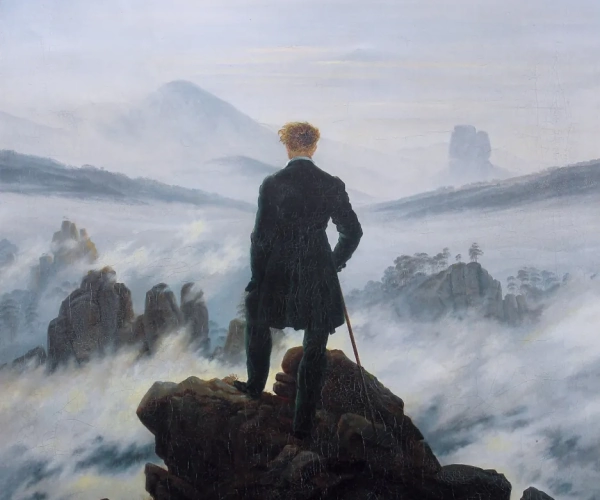Wanderer above the Sea of Fog
Caspar David Friedrich, a leading figure of the German Romantic movement, created one of his most renowned works titled "Wanderer above the Sea of Fog" in 1818. This painting depicts a lone figure standing on a rocky precipice, gazing out over a sea of fog with majestic mountains in the background. The composition and use of light and shadow evoke a sense of awe and contemplation, reflecting Friedrich's belief in the sublime as a powerful force in nature.
At the center of the painting stands the "wanderer," clad in a dark overcoat, his back to the viewer, and lost in the vast expanse before him. The figure's stance and the voyage of discovery he embodies speak to the Romantic fascination with the individual's relationship to the natural world and the mysteries of existence. The painting invites viewers to ponder the unknown and embrace the grandeur of the world around them.
Friedrich's manipulation of light and atmosphere adds depth and drama to the scene, creating a sense of transcendence and introspection. The interplay between light and shadow contributes to the spiritual and philosophical dimensions of the work, as the wanderer's contemplation becomes a deep meditation on the human experience and its connection to the universe.
"Wanderer above the Sea of Fog" has been celebrated for its evocative portrayal of the sublime, its portrayal of the individual's encounter with the infinite, and its lasting influence on European Romanticism. The painting continues to captivate audiences with its timeless exploration of the human spirit and its place within the natural world.







No Comments Yet...